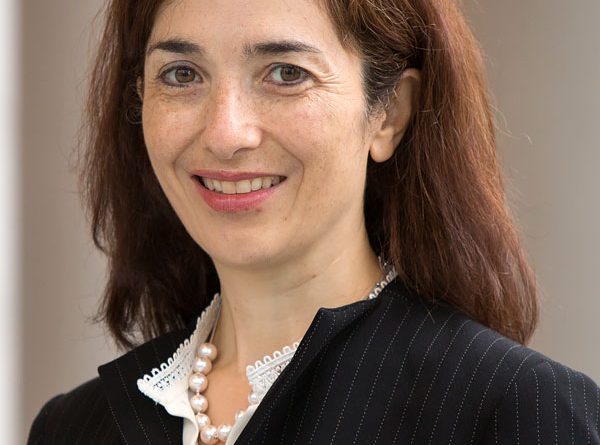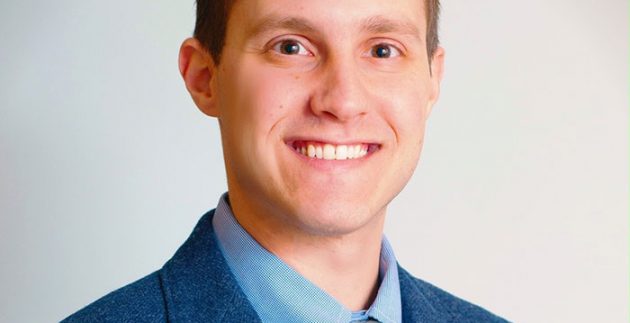Acute PD during COVID-19 experience in an academic medical center in New York.

Ladan Golestaneh, M.D., M.S.
Professor, Department of Medicine (Nephrology)
Albert Einstein College of Medicine
Ignacio P: Welcome to this ISN meeting, podcasts and interviews. My name is Ignacio and one of the second-year nephrology fellows at Brigham and Women’s Hospital and Mass General Hospital nephrology fellowship, today I’m here with Dr. Ladan Golestaneh. She is a professor of medicine at Albert Einstein College of Medicine, where she is a nephrology attending, Dr. Golestaneh has been involved on the topic of COVID-19 and renal disease; part of it because as we know New York City was one of the cities that was overwhelmed with these cases of COVID-19. And so, we had the pleasure of having her here and asking her some of her insights about this topic. Welcome Dr. Golestaneh.
Ladan G: Well, thank you very much for the opportunity, and I hope that this will be useful for some of the audience members, some of our experiences in dealing with the surge.
Ignacio P: During the peak of the of the pandemic last year in New York City alone, and in many other cities, there was a very unusually high demand for renal replacement therapies for patients with COVID-19 and AKI, as nicely outline some of your articles in JASN and AJKD, we saw a lot of the acute PD, which is something that we don’t usually see in the United States. So, I wanted to start by asking you, what was your experience with acute PD in the ICU in the pre-COVID era?
Ladan G: Yeah, thanks, Ignacio. So, you know, we are we practicing in an inner city academic medical institution. And as you know, our patient population has a huge burden of ESRD. And for the most part, these patients receive in-center hemodialysis. Our hospital system is best equipped to handle the inpatient side of caring for patients on in-center hemodialysis. We have a very active, very busy, very well run inpatient hemodialysis unit, but we never had an acute PD program. And as far as our outpatient PD program, this is something that’s definitely growing, and it had been for the last five to six years. We have what’s called a center of excellence, where we have a standalone home hemodialysis and PD dialysis unit, but all that it’s an outpatient site. And even
though more and more of these patients, as the program grows, get hospitalized at our hospitals, there really were only a few designated floors that that could accommodate these chronic outpatient PD patients as they were hospitalized for various reasons. And the reason for that really is because of nurse training. There are probably only a few internal medicine wards and a couple of telemetry wards that could really handle peritoneal dialysis patients. And, you know, even though the supplies are there and there’s really no big infrastructure you need for PD, but it was pretty much bare bones and patient support of PD patients with manual PD as the only option. Now I will add that as our outpatient dialysis unit was growing, we were starting to put PD catheters in some inpatients and then subsequently discharge them to the outpatient unit from the hospital to receive urgent start PD. But that is very different from what you’re asking and that is an in-hospital acute PD program, it did not exist.
Ignacio P: I think this is something that I find very interesting because as we might anticipate that some other centers around in the world are experiencing the same thing, namely that they don’t necessarily have this experience in acute PD. And you did really touch on some points that were difficult to handle, for example, the nurse, the training, the preparation for the wards. But in your article, you describe some of the steps you took to be able to implement the acute PD program. Will you tell us what were some of the challenges of starting this acute PD program and particularly in the setting of COVID-19? Is there anything particular about this setting which makes acute PD different from what you would have envisioned if the patient didn’t necessarily have COVID-19?
Ladan G: With the PD program in the hospital, the biggest challenge again was a lack of trained staff to do the exchanges, we only had manual exchanges; cycler therapy did not exist at our institution. And so, one of the biggest challenges was actually to get the nurses trained in a timely fashion, which, as you can imagine during the COVID surge, there’s no such thing. Now, you know, as someone who was rotating on the wards and taking care of patients with end ESRD and AKI, we were seeing less and less hemodialysis supply staff available, and it became almost like a desperate situation. So, the next best thing was to turn to PD. I was fortunate enough to be the medical director of the outpatient burgeoning PD program, I had contacts at the supply companies, and I had this amazing nurse manager in the outpatient unit who is very knowledgeable and accessible. I remember honestly sitting in the stairway on the phone with her asking her how to order supplies for, say, fifty to one hundred patients who could be coming in and needing dialysis for their AKI syndrome. And literally I listed it as she told me. And so, the supplies were ordered in the nick of time, and we got a huge bolus of supplies that that in itself was challenging because we didn’t have the storage infrastructure. Our central supply was not big enough to store all of that. There is an outside storage facility that stored it and then would feed our in-hospital storage facility so that that was one challenge. But back to your question. Our biggest challenge was staff training, and I have to be honest with you, we the nephrologists, took it upon ourselves to learn how to do manual exchanges. There was a team of like maybe seven or eight of us, and we learned it from our pediatric dialysis nurses who had a lot of experience taking care of pediatric patients with ESRD. Literally, we went into their units and they taught us step by step, and we practiced it using YouTube videos, and we started our PD program with a nephrologist doing exchanges. As you know, the great thing about PD is that it requires very little infrastructure. So during the peak, we had a number of makeshift intensive care units that were probably understaffed until later, when staff from other parts of the hospital were coming in and helping us. And I have to tell you that staff that was coming in to help us was extremely enthusiastic and willing to learn. So with time, as the nephrologist went to the bedside and did the manual exchanges, we would teach the staff as we were doing them. Our chief made laminated cards with step-by-step procedures. And they slowly picked up on it. So that was for the first few weeks. And then we also learned from our pediatric dialysis nurses, and the nephrologist learned how to program the cycler, how to use the cycler. And again, we went bedside and started putting patients on cyclers and teaching the staff at the bedside how to do that. They became better and better at it as well, especially the ICU nurses. So, you know, it was very much a bedside teaching touch and go kind of phenomenon. But it worked to some extent.
Ignacio P: And it’s very interesting because it had to start with training of the nephrologist themselves. And then I suppose that if it was a challenge for nephrology, I can imagine also for other specialties, especially the critical care colleagues, who I suppose they are not as used to seeing these patients of PD in the units.
Ladan G: Yeah, that’s absolutely true. I remember rounding a few times in the ICU and there was some discussions around “how are you going to do this? you can’t remove fluid with this modality” They’ve never seen it, we had to demonstrate that the bag was actually full and there was two liters negative for the course of the cycler treatment for 16 hours or whatever it was. But yeah, it was chaos, but there was definitely this sense and this notion that we were doing something real here, and I think that’s what drove us as the nephrologist and the staff to want to learn and to assist and to look on their own YouTube videos, to call the pediatric nurses who really stepped up. I cannot tell you how amazing that was, it was definitely a team effort, but we got it off the ground and we did it quickly.
Ignacio P: One of the other things that I think is it’s interesting is when we review the literature comparing PD with other modalities of dialysis for AKI, usually the sense is that they are fairly comparable if we exclude some patients where it’s hard to do, perhaps especially if they have surgery. What was your sense from real life? Do we need visibility and resolve within these patients that were very sick and require renal replacement therapy?
Ladan G: That’s a really good question. I should add before I embark on answering that, we had amazing surgical colleagues who would just be there whenever we need it. If we needed a PD catheter placed we would text them and it would happen within hours. And we also got our interventional radiologists who had never put in a PD catheter start putting them in for the patients who are not in the ICUs who were in the wards that could come to the radiology suite. So that honestly made it happen. I mean, without PD catheters, you can’t really do PD, right? But back to your question, I would say that I read some of that literature about PD being pretty comparable to hemodialysis in the acute setting, and I would agree. But I would say that in our experience, I don’t know how much experience your audience or you have with severe COVID related acute kidney injury, but it is extremely catabolic, extremely aggressive and the way that the kidneys shut down, the patients become very uremic with severe electrolyte abnormalities. These are patients who are in the intensive care unit intubated with multi-organ failure syndromes. So I would say PD probably was feasible, very feasible and comparable to hemodialysis. And those patients who were not in that scenario, who were on the wards, who came in were not intubated. Maybe they were on high flow nasal cannula. Maybe they needed occasional BiPAP but had some acute kidney injury, these are the same patients that would go get their catheters placed in the interventional radiology suite. And then we would do the manual exchanges. And for the most part, they did very well. With the ICU patients, there were some feasibility issues because a lot of them had to be prone for prolonged periods of time. And we did not do PD while they were prone because these were fresh catheters and we were worried about leakage, we were worried that it wouldn’t work, so we would wait until they were supine to start the PD. And that created some challenges, especially when we were only doing manuals. I would say for the ICU setting, we ran into some issues with PD, not just because of the feasibility with the prone schedule, but also because the patients were extremely catabolic and it was almost like we were chasing them to remove fluid and try and normalize some of these abnormalities that were occurring.
Ignacio P: And I think that that’s probably in line with some of the literature, and I think it’s a very important insight that it seems like it’s a feasible option, but perhaps not for every single patient, correct?
Ladan G: I have to add, though, as we got better and better with the cyclers it came a point where we would schedule the cycler for exactly the duration where the patient was supine and we would provide very aggressive cycler therapy, and that seemed to work better. So, I don’t want to kind of say it’s not an option for ICU patients who are prone, because if you use a cycler, well, if you use it correctly as you see in the literature, there are some centers that even do PD on prone patients. We just never attempted it. I think it is a feasible option.
Ignacio P: So now as we hope that more people start getting vaccinated and hopefully cases start decreasing in some, at least in some parts of the world. What is next for your acute PD program? Is it still going or was it only a focus on COVID-19?
Ladan G: It was focused on during the surge that we experienced in New York, and it was really our backup because we just couldn’t supply enough hemodialysis. It has not continued post the COVID-19 surge of last spring. But our division is working really hard right now to at least provide a robust PD program at our institution. You know, some of the barriers that remain are that we need to train the staff, and once trained, have the staff do it repeatedly. These are issues that came up when we started CRRT at our institution, and we just don’t have the numbers for the nurses or whoever will be doing the PD exchanges or not even cycler therapy at this point. We don’t have the patient numbers to have them remain in practice and comfortable. So that’s what we’re struggling with a little bit. But I think, you know, with all this push to increase home modalities that we’re seeing from CMS, I think this is something that will be something that will improve over time.
Ignacio P: We have mainly discussed about PD in part because I believe that this could be helpful for other centers in other parts of the world and maybe right now experiencing some of these shortages. But of course, you have only been able you have not only been involved in PD, but you also have discussed about transplant and outcomes in patients on hemodialysis. You have a lot of involvement in several areas of nephrology related to COVID-19 from this insight and this time you have been studying this. What do you see as the as the focus right now of future research? What do you think is more relevant currently in COVID-19 and nephrology?
Ladan G: You know, that’s so crucial, right? I would think in my opinion that the pathophysiology of the and acute kidney injury and COVID associated kidney disease in general outcomes, what happens after AKI if they improve? And then also why? Why is COVID-AKI so aggressive? Is it just because the patients are so critically ill? Or is there some other feature of COVID Aki specific to COVID that makes it so aggressive? And then I’m really curious to know if the medications that we’re seeing more and more used to treat COVID pneumonia attenuate the course of COVID-AKI. And finally, I’m just curious to know if APOL-1 one puts you at higher risk for kidney disease, especially the podocytopathy, the collapsing FSGS that’s been described. And does it behave similarly to HIVAN in that way?
Ignacio P: I think that’s very important, highlighted in one of the articles about the racial disparities in outcomes from COVID-19 as compared to patients without COVID-19 and AKI. This has been a very nice interview with a lot of insight that I hope people find helpful and thank you for being with us today.
Ladan G: And thank you, Ignacio, thanks for having me. Have a great day.
Ignacio P: Thank you too.


